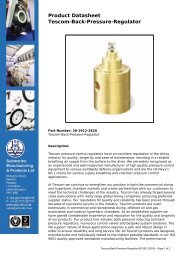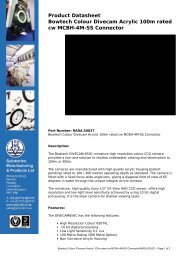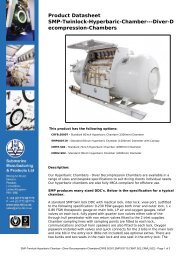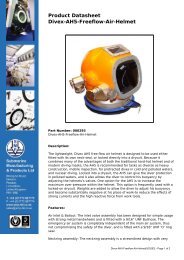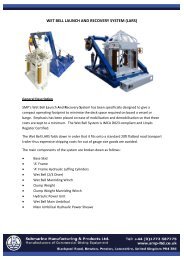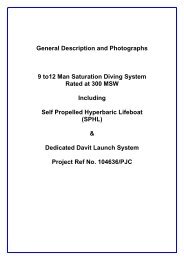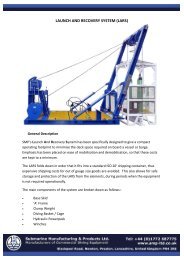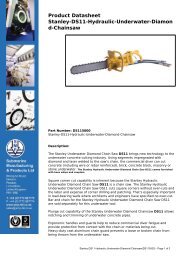Instruction Manual - DECA | Diving Equipment Company of America
Instruction Manual - DECA | Diving Equipment Company of America
Instruction Manual - DECA | Diving Equipment Company of America
You also want an ePaper? Increase the reach of your titles
YUMPU automatically turns print PDFs into web optimized ePapers that Google loves.
INSTALLATION & OPERATION<br />
SIMULCOM - WHAT WHY AND HOW 6.12<br />
Simulcom is a communications system designed from the ground-up to take advantage <strong>of</strong> the<br />
current state <strong>of</strong> the art in semiconductor technology and to provide superior diver hard wire<br />
communication. Simulcom has the following advantages:<br />
1. 285% More signal from the divers microphone (over 2-wire), using your existing 8-ohm<br />
microphone!<br />
2. No push to talk!<br />
3. No special diver communication wire required!<br />
4. Diver hears himself talk!<br />
5. Diver to diver communication without having to operate any controls. Just like a<br />
telephone!<br />
These advantages are real and can be readily demonstrated. The system is simple, easy to<br />
operate, and easy to trouble shoot (in fact, easier than 2-wire once you understand what’s<br />
happening).<br />
SIMULCOM pays <strong>of</strong>f in good communication, which after all these years is still a goal some have<br />
yet to achieve. Better communication means higher production, safer diver conditions, and less<br />
down time.<br />
Now that we have made these claims, allow us to explain why and how. First, let’s define some<br />
basic industry terms so that we can all start from the same point.<br />
1. 2-Wire is used almost exclusively in the diving industry. It is technically defined as a single<br />
communication path, a minimum <strong>of</strong> 2 wires. Normally, the diver is the priority path (tender<br />
listens to diver). Signal reversing is accomplished by pushing the “Push to talk” switch<br />
(diver hears tender). Generally, most diver commo cables have 4 wires i.e., “Army surplus<br />
commo-cable”. Most <strong>of</strong>ten the wires are twisted together to create a pair, this is still a 2-<br />
wire system. The tying together is done for redundancy.<br />
2. 4-Wire communications is defined as a dual communication path, a signal path (a pair <strong>of</strong><br />
wires) for up-link and a separate signal path (a pair <strong>of</strong> wires) for downlink. This allows<br />
voice communications to go in both directions at the same time. A common example <strong>of</strong> “4-<br />
wire” like communications is the telephone. A telephone system, which required a push to<br />
talk, would be antiquated today. Another example is a system called Round Robin. Round<br />
Robin is a step in the right direction, however, only a half step. It has several advantages<br />
and some disadvantages which we will get into later. Remember Simulcom and Round<br />
Robin are not the same.<br />
23



